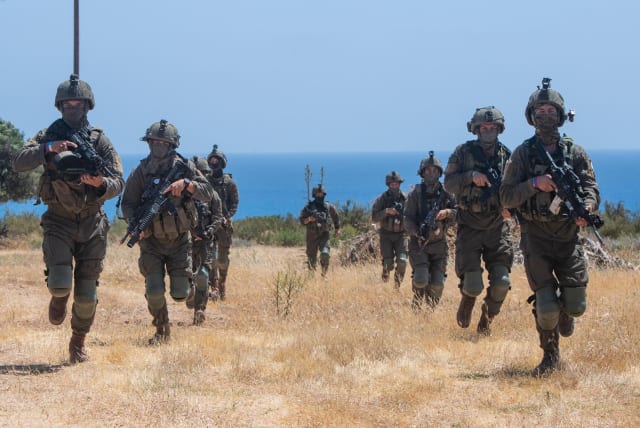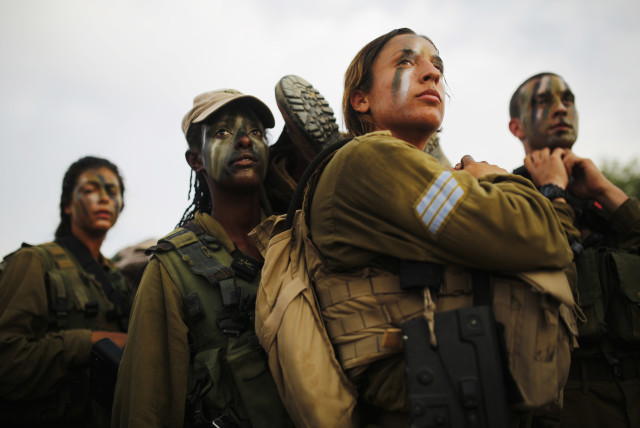IDF induction stats show situation less dire than presented - analysis

Yes, the overall percentage of those inducted into the army is declining, but it still remains high throughout Israel.
Many are the stories in this country written 20, 30, even 40 years ago that, with some tweaking and name changes here and there, could run in today’s paper.
One example is budget stories.
Every time the budget comes to the Knesset for approval, final demands and coalition crises are solved at the last minute. Change the names and the parties, and a story written 10 years ago would hold today, including the cries that the haredim are robbing the state’s coffers.
Another type of story that runs in cycles has to do with emigration, or how everyone seems to want to leave for greener pastures – be it Australia, Canada, the US, Germany, or now – the flavor of the month – Portugal. For years, stories have appeared in the mainstream media about the specter of a debilitating brain drain and how all the best and the brightest are just dying to leave the country.
These stories obviously don’t do much to boost the morale of those who want to stay. Nor do they reflect reality. The truth: Over the last 40 years, Israel’s population has grown from 4.1 million in 1983 to nearly 10 million today. So much for everyone up and leaving.
Another story that periodically makes the rounds and also can bring one down are reports about how significantly fewer Israeli youth go into the army, how there is lower motivation to serve in combat units, and how so much of the burden is being picked up by kids from the periphery with bleak prospects.
The last two stories – about how people want to leave the country and others don’t want to serve – received a massive boost over the last few months due to the judicial overhaul plan. There were enough stories in the previous four months about a desire to emigrate and lack of motivation in the IDF that one could be forgiven for concluding that within a few years, the bulk of the productive sectors of Israeli society will all have left, and none of those who remained will show up for military duty.
What is the situation regarding Israeli enlistment figures?
On Sunday, however, the IDF’s Manpower Directorate released its annual figures of the cities and regional councils and even schools with the highest rates of army enlistment, and the picture that emerges is not of Israeli youth looking to avoid army duty or a country where only those in the periphery serve.
What emerges is a country where – except for the haredi and Arab communities – there is still motivation, and the motivation, while especially high in national religious communities, is high elsewhere as well.
Yes, the overall percentage of those inducted into the army is declining, but it still remains high throughout the country.
For instance, at the top of the table is Modi’in, with an enlistment rate of 90.9% (in 2015, that number for Modi’in, which led the pack that year as well, was 91.4% – not a significant change).
Second on the table was Ra’anana, with an induction rate of 80.7%, down from 83.2% eight years ago. Rounding out the cities in the top five this year (the army did not include those at the bottom of the list to avoid being accused of “shaming”) are Kfar Saba, Herzliya, and Rishon Lezion.
All of these are cities in the center, all cities in the higher socio-economic bracket, all places where the stereotype is not of a youth highly motivated for army service.
The ranking is based on a combination of the percentage of inductees among eligible candidates, the percentage who go into combat units, and the percentage of those who become officers.
Regarding service for women, the top five on the list are Modi’in, Herzliya, Ramat Gan, Rishon Lezion, and Kfar Saba.
The army divides the different locales into large, medium, and small cities and regional councils. In the middle and smaller city categories as well, the stereotype that those in the center of the country have lost their motivation and Zionist zeal crashes on the rocks of reality.
Kiryat Ono, for example, has an 87% rate of enlistment, Hod Hasharon has 86%, and Ramat Hasharon has a rate of 85% among males. The numbers are similar for women, and in affluent Hod Hasharon, there is a slightly higher rate of women inductees (87.4%) of the eligible population than men (86.3%).
Tel Aviv is 13th on the list of large cities, and Jerusalem is 18th – though Jerusalem leads the list of large cities whose inductees go into combat units. North Tel Aviv, with its stereotype of wealth and entitlement, has an induction rate of 82%, significantly higher than the national average of 69%.
A study the IDF released in December put the national induction rate for Jewish males in 2022 at 69%. Some 16% of the induction-age Jewish population were exempted to pursue yeshiva studies, and another 15% received exemptions for other reasons. The overall induction rate for women was 55.5%.
Those figures also showed something counterintuitive: the higher a person’s socio-economic level, the higher their presence in combat units.
For instance, the 2022 draft induction statistics showed that 40% of those who went into the commando units come from the top two socio-economic brackets. That puts to rest the myth that the poorer segments of society send their sons and daughters to fight, while the rich and elite – if they go into the army at all – are all going into the high-tech units.
The figures also show that for males, of the top ten schools rated in terms of induction percentage and the percentage who go into combat units and officer’s course, five of them are affiliated with the national religious stream, including the top two in the table: The Bnei Akiva yeshiva in Susiya and the Kvutzat Yavneh.
A look at those figures shines a more sanguine light on the state of the army than some of the more sensational reports that the IDF is swiftly ceasing to be a people’s army might indicate.
Jerusalem Post Store
`; document.getElementById("linkPremium").innerHTML = cont; var divWithLink = document.getElementById("premium-link"); if (divWithLink !== null && divWithLink !== 'undefined') { divWithLink.style.border = "solid 1px #cb0f3e"; divWithLink.style.textAlign = "center"; divWithLink.style.marginBottom = "15px"; divWithLink.style.marginTop = "15px"; divWithLink.style.width = "100%"; divWithLink.style.backgroundColor = "#122952"; divWithLink.style.color = "#ffffff"; divWithLink.style.lineHeight = "1.5"; } } (function (v, i) { });

